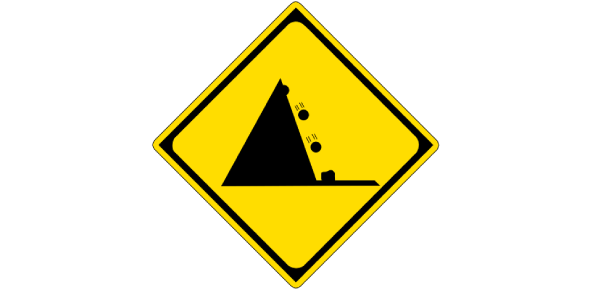Driving In Japan

The 'Driving In Japan' quiz evaluates knowledge of road rules and regulations, including lane usage, passing rules, and bus lane protocols. It is essential for drivers in Japan to understand these regulations to ensure safe and legal driving practices.
- 1.
Vehicles may partially cross or entirely cross to the right half of the road in which case:
- A.
Whenever you are on a multi-lane road, or the road is open to one way traffic only
- B.
Whenever there is an animal blocking the left side of the road.
- C.
Whenever a kid is lying in the middle of the road.
- D.
When you believe it is safe to do so
Correct Answer
A. Whenever you are on a multi-lane road, or the road is open to one way traffic onlyExplanation
When you are on a multi-lane road or the road is open to one-way traffic only, it is permissible to partially or entirely cross to the right half of the road. This is because in such situations, there are separate lanes designated for each direction of traffic, and it is safe to move to the right half of the road. This allows for smoother flow of traffic and minimizes the risk of accidents.Rate this question:
-
- 2.
Fill In The Blank: Vehicles may partially cross or entirely cross to the right half of the road whenever attempting to pass another vehicle on a road where the width of the left half is less than __ meters and road conditions permit passing.
Correct Answer
6Explanation
Vehicles may partially cross or entirely cross to the right half of the road whenever attempting to pass another vehicle on a road where the width of the left half is less than 6 meters and road conditions permit passing.Rate this question:
- 3.
True or False: You can pass when you have a yellow center line.
- A.
True
- B.
False
Correct Answer
B. FalseExplanation
You cannot pass when you have a yellow center line. Yellow center lines indicate that traffic is moving in opposite directions and passing is not allowed. Passing is only allowed when there is a broken white line or no center line present. Therefore, the statement is false.Rate this question:
-
- 4.
Bus Priority Lanes are designated for:
- A.
Buses, taxi cabs and motorcycles.
- B.
Buses and taxi cabs.
- C.
Buses.
- D.
Bicycles and motorcycles.
Correct Answer
B. Buses and taxi cabs.Explanation
Bus Priority Lanes are designated specifically for buses and taxi cabs. These lanes are intended to prioritize and facilitate the movement of public transportation vehicles, such as buses and taxis, in order to improve efficiency and reduce congestion on the roads. By restricting access to only buses and taxi cabs, these lanes ensure that these vehicles can travel more quickly and smoothly, ultimately benefiting commuters who rely on public transportation services.Rate this question:
-
- 5.
Bus Exclusive Lanes are designated for:
- A.
Buses and taxi cabs with passengers
- B.
Buses, taxi cabs with passengers and motorcycles
- C.
Amish horse and buggies.
- D.
Motorcycles and taxicabs only.
Correct Answer
B. Buses, taxi cabs with passengers and motorcyclesExplanation
Bus Exclusive Lanes are designated for buses, taxi cabs with passengers, and motorcycles. This means that these lanes are specifically reserved for these types of vehicles, allowing them to travel more efficiently and quickly. By restricting access to these vehicles, it helps to reduce congestion and improve the overall flow of traffic. This also encourages the use of public transportation and alternative modes of transportation, such as motorcycles, which can help reduce emissions and promote sustainability.Rate this question:
-
- 6.
The only time you are allowed in a Bus Exclusive lane is when you are making a ____ hand turn.
Correct Answer
leftExplanation
In a Bus Exclusive lane, only buses are allowed to travel. However, there is an exception for other vehicles to enter the Bus Exclusive lane when they are making a left-hand turn. This is to ensure that traffic flow is not disrupted and to prioritize the movement of buses. Therefore, the correct answer is "left."Rate this question:
- 7.
Motorcycles are sometimes restricted to the far _____ lane on multi-lane roads.
Correct Answer
leftExplanation
Motorcycles are sometimes restricted to the far left lane on multi-lane roads. This is because motorcycles are smaller and more maneuverable than other vehicles, and the left lane provides them with more space to navigate and make lane changes safely. Additionally, being in the left lane allows motorcycles to maintain a consistent speed and avoid being overtaken by faster vehicles in the other lanes. Overall, the far left lane is often considered the safest and most suitable lane for motorcycles to travel in.Rate this question:
- 8.
Motorcycles are sometimes restricted to the left lane road on multi-lane roads except within ___ meter(s) of making a right hand turn.
- A.
1 meter
- B.
30 meters
- C.
5 meters
- D.
1 meter or less
Correct Answer
B. 30 metersExplanation
Motorcycles are sometimes restricted to the left lane road on multi-lane roads except within 30 meters of making a right hand turn. This means that motorcycles are allowed to use the left lane for a certain distance before they need to merge into the right lane in order to make a right hand turn. This restriction is likely in place to ensure the safety of both the motorcycle riders and other drivers on the road, as it provides enough time for the motorcycle to safely transition into the right lane before making the turn.Rate this question:
-
- 9.
You are required to wear _________ when you are operating a motorcycle.
- A.
Helmet, goggles, long-sleeve shirt/jacket, long legged pants
- B.
Helmet, face shield, long sleeved shirt/jacket, long pants and boots/shoes over the ankles
- C.
Helmet, goggles, long sleeved shirt/jacket, long pants, boots/shoes over the ankles and gloves.
Correct Answer
C. Helmet, goggles, long sleeved shirt/jacket, long pants, boots/shoes over the ankles and gloves.Explanation
When operating a motorcycle, it is essential to wear protective gear to ensure safety. This includes a helmet to protect the head from potential injuries. Goggles are necessary to shield the eyes from dust, debris, and wind. A long-sleeved shirt or jacket provides protection to the arms from abrasions and sunburn. Long pants are required to protect the legs from potential injuries. Boots or shoes over the ankles offer stability and protection to the feet and ankles. Lastly, gloves are necessary to maintain a firm grip on the handlebars and protect the hands in case of a fall or accident.Rate this question:
-
- 10.
The color of your reflective vest you wear while riding a motorcycle must be either yellow or
Correct Answer
orangeExplanation
The reason the color of the reflective vest worn while riding a motorcycle must be either yellow or orange is because these colors are highly visible and easily distinguishable from the surrounding environment. This is crucial for the safety of the rider, as it helps other motorists and pedestrians to easily spot the motorcyclist, especially in low-light conditions or bad weather. The bright and contrasting colors of yellow and orange enhance visibility and reduce the risk of accidents or collisions on the road.Rate this question:
- 11.
Vehicles must come to a complete stop at all stop lines when they are provided, crosswalks, or ________ intersections where stopping is required.
Correct Answer
uncontrolledExplanation
Vehicles must come to a complete stop at all stop lines when they are provided, crosswalks, or uncontrolled intersections where stopping is required. In this context, "uncontrolled" refers to intersections that do not have traffic signals or stop signs to regulate the flow of traffic. At these intersections, drivers must exercise caution and yield the right-of-way to other vehicles and pedestrians.Rate this question:
- 12.
If your vehicle breaks down and you must leave it on the side of the road you are subject to penalty. In addition, if any of your cargo falls out of your vehicle, you will also be subject to penalty. The maximum fine you would have to pay is ____ yen.
Correct Answer
50,000Explanation
If your vehicle breaks down and you have to leave it on the side of the road, you may be subject to a penalty. Similarly, if any of your cargo falls out of your vehicle, you can also face a penalty. The maximum fine that you would have to pay in such situations is 50,000 yen.Rate this question:
- 13.
For all trucks under 5 tons and all passenger vehicles, the maximum speed limit is ___ kilometers per hour.
Correct Answer
60Explanation
The maximum speed limit for all trucks under 5 tons and all passenger vehicles is 60 kilometers per hour. This means that these vehicles are not allowed to exceed this speed limit while driving. This speed limit is likely set to ensure the safety of these vehicles and other road users, as higher speeds can increase the risk of accidents and make it harder for drivers to maintain control of their vehicles.Rate this question:
- 14.
For all trucks over 5 tons, all special vehicles, motor scooters and motorcycles under 251 cc, the the maximum speed limit is ___ kilometers per hour.
Correct Answer
50Explanation
The given question states that for trucks over 5 tons, special vehicles, motor scooters, and motorcycles under 251 cc, the maximum speed limit is a certain number of kilometers per hour. The answer provided is 50, indicating that the maximum speed limit for these vehicles is 50 kilometers per hour.Rate this question:
- 15.
For any two-wheeled vehicle under 51 cc displacements, the maximum speed limit is __ kilometers per hour.
Correct Answer
30Explanation
For any two-wheeled vehicle with a displacement under 51 cc, the maximum speed limit is 30 kilometers per hour. This means that these vehicles are not designed to go faster than 30 kilometers per hour for safety reasons. This speed limit helps ensure the safety of riders and other road users, as smaller vehicles may not have the stability or braking power to handle higher speeds.Rate this question:
- 16.
Kilometers per hour is approx. ____ mph
- A.
.062
- B.
.0062
- C.
0.62
- D.
0.062
Correct Answer
C. 0.62Explanation
The correct answer is 0.62 because to convert kilometers per hour to miles per hour, we multiply the value by 0.621371. Therefore, 1 kilometer per hour is approximately equal to 0.621371 miles per hour. Rounding off, we get 0.62 as the approximate value.Rate this question:
-
- 17.
Maintain the ___ second rule so you do not tailgate and get into an accident.
Correct Answer
4Explanation
The question is asking for the number of seconds in the rule that should be maintained to avoid tailgating and accidents. The correct answer is 4, which means that a driver should maintain a minimum of four seconds of following distance behind the vehicle in front of them to ensure safety and prevent accidents. This allows enough time to react and stop in case of sudden braking or other unexpected events.Rate this question:
- 18.
Passing on the left is prohibited except when a vehicle is stopped and turning to the ____ and it is safe to pass on the left.
Correct Answer
rightExplanation
Passing on the left is generally not allowed, except in the case when a vehicle is stopped and turning to the right, and it is safe to pass on the left. This means that if a vehicle ahead is indicating a right turn and has come to a stop, it is permitted to pass that vehicle on the left side if it is safe to do so.Rate this question:
- 19.
What is the minimum driving age in Japan for cars and motorcycles? In Japan, the minimum age for driving cars and motorcycles is 18 years old. This age requirement applies to both Japanese citizens and foreign residents who wish to obtain a driver's license in Japan.
- A.
16 years old
- B.
18 years old
- C.
20 years old
- D.
21 years old
Correct Answer
B. 18 years oldExplanation
In Japan, the minimum age for driving cars and motorcycles is 18 years old. This age requirement applies to both Japanese citizens and foreign residents who wish to obtain a driver's license in Japan.Rate this question:
-
- 20.
"Passing" means going around the vehicle on a ____-way street by passing them on the right.
Correct Answer
twoExplanation
Passing means going around the vehicle on a two-way street by passing them on the right. This means that when a vehicle wants to overtake another vehicle on a street where traffic flows in both directions, it should pass the other vehicle on the right side.Rate this question:
- 21.
Drivers should not park within ___ meters or less from the outer perimeter or an intersection or a corner of a road.
Correct Answer
5Explanation
Drivers should not park within 5 meters or less from the outer perimeter or an intersection or a corner of a road because it can obstruct the view of other drivers and increase the risk of accidents. Parking too close to an intersection or corner can limit visibility for both the driver and other road users, making it difficult to anticipate and react to oncoming traffic. It is important to maintain a safe distance to ensure clear sightlines and promote road safety.Rate this question:
- 22.
Drivers should not stop or park at the ____ side of a safety zone or within ___ meters or less from either end of a safety zone road, if so provided.
- A.
Right, 5
- B.
Left, 5
- C.
Right, 30
- D.
Left, 30
- E.
Left, 10
Correct Answer
E. Left, 10Explanation
Drivers should not stop or park at the left side of a safety zone or within 10 meters or less from either end of a safety zone road, if so provided.Rate this question:
-
- 23.
You should not stop or park within __ meters of a pedestrian crosswalk.
Correct Answer
5Explanation
You should not stop or park within 5 meters of a pedestrian crosswalk. This is to ensure the safety and visibility of pedestrians using the crosswalk. Parking too close to a crosswalk can obstruct the view of both drivers and pedestrians, increasing the risk of accidents. Additionally, parking too close to a crosswalk can make it difficult for pedestrians to safely enter and exit the crosswalk, potentially putting them in danger. Therefore, it is important to adhere to this rule and maintain a safe distance from pedestrian crosswalks when parking or stopping.Rate this question:
- 24.
Drivers should not park or stop within ___ meters of signpost indicating a bus stop or a railroad crossing.
- A.
30 meters
- B.
10 meters
- C.
5 meters
- D.
3.5 meters
- E.
3 meters
Correct Answer
B. 10 metersExplanation
Drivers should not park or stop within 10 meters of a signpost indicating a bus stop or a railroad crossing. This is because parking or stopping too close to these areas can obstruct the path of buses or trains, potentially causing accidents or delays. It is important to maintain a safe distance to ensure the smooth flow of traffic and the safety of all road users.Rate this question:
-
- 25.
The fine for illegal parking or stopping is _____ yen.
Correct Answer
15,000Explanation
The fine for illegal parking or stopping is 15,000 yen.Rate this question:
- 26.
Parking in any of these places in prohibited:__ meter(s) or less from a fire station or a fire hydrant.__ meter(s) or less from a fire alarm__ meter(s) or less from a construction project
- A.
1,5,5
- B.
5,5,30
- C.
5,1,5
- D.
5,10,10
- E.
5,3,1
Correct Answer
C. 5,1,5Explanation
Parking in any of these places is prohibited if it is 5 meters or less from a fire station or a fire hydrant, 1 meter or less from a fire alarm, and 5 meters or less from a construction project.Rate this question:
-
- 27.
No vehicle will be parked in any place where there is less than ___ meters of space remaining on the road on the right side of the vehicle.
Correct Answer
3.5Explanation
According to the given statement, no vehicle can be parked if there is less than 3.5 meters of space remaining on the right side of the vehicle. This means that there must be at least 3.5 meters of space available on the road for a vehicle to legally park there.Rate this question:
- 28.
Any vehicle on a ____ road has the right-of-way.
Correct Answer
priority
widerExplanation
In this question, the correct answer is "priority." This means that any vehicle on a road with priority has the right-of-way. This implies that vehicles on other roads must yield to those on the priority road. The term "wider" is not relevant to the concept of right-of-way and does not determine who has the right-of-way.Rate this question:
- 29.
Any vehicle traveling on a priority road or a _____ road has the right-of-way.
Correct Answer
widerExplanation
Any vehicle traveling on a priority road or a wider road has the right-of-way. This means that if a road is wider than the other road it intersects with, the vehicles on the wider road have the right to proceed first. The width of the road is used as a determining factor to establish priority and ensure smooth traffic flow.Rate this question:
- 30.
What does this sign mean?
Correct Answer
Do not enter
Motor Vehicles are prohibited to enter
Motor Vehicles are not allowedExplanation
The sign indicates that motor vehicles are not allowed or prohibited from entering. The phrase "Do not enter" implies that vehicles should not enter the area, while the additional statements "Motor Vehicles are prohibited to enter" and "Motor Vehicles are not allowed" reinforce this restriction.Rate this question:
- 31.
What does this sign mean?
Correct Answer
Bumpy Road AheadExplanation
This sign indicates that there is a bumpy road ahead. It warns drivers to expect uneven surfaces, potholes, or other road conditions that may cause discomfort or potential damage to the vehicle. Drivers should slow down and proceed with caution to ensure their safety and prevent any accidents or damage to their vehicles.Rate this question:
- 32.
What does this sign mean?
Correct Answer
No passingExplanation
This sign indicates that passing other vehicles is prohibited. Drivers are not allowed to overtake or pass any other vehicles on the road. It is important to adhere to this sign to ensure safe and orderly traffic flow, preventing accidents or collisions that may occur when attempting to pass other vehicles.Rate this question:
- 33.
What does this sign mean?
Correct Answer
Motor VehiclesExplanation
The sign indicates that only motor vehicles are allowed in the designated area. It does not specify any other type of vehicles or pedestrians. Therefore, any type of motor vehicle can enter, while non-motorized vehicles and pedestrians are prohibited.Rate this question:
- 34.
What does this sign mean?
Correct Answer
Other Hazard - 35.
What does this sign indicate?
Correct Answer
Maximum speedExplanation
This sign indicates the maximum speed limit allowed in the area where it is posted. It serves as a reminder for drivers to adhere to the specified speed limit for safety reasons. By following the maximum speed limit, drivers can reduce the risk of accidents and ensure the smooth flow of traffic.Rate this question:
- 36.
What does this sign mean?
Correct Answer
StopExplanation
This sign indicates that drivers must come to a complete halt and yield the right of way to other vehicles or pedestrians before proceeding. It is commonly found at intersections or areas where there is a high risk of accidents. Following this sign is crucial for maintaining safety on the road and preventing collisions.Rate this question:
- 37.
What does this sign mean?
Correct Answer
No ParkingExplanation
This sign indicates that parking is prohibited in the area. Vehicles are not allowed to park in the designated space or along the road where this sign is displayed.Rate this question:
- 38.
What does this sign mean?
Correct Answer
No Stopping, no stoppingExplanation
This sign indicates that parking and stopping are prohibited in the designated area. It is likely placed to ensure smooth traffic flow and prevent obstruction on the road. Violating this sign may result in penalties or towing of the vehicle.Rate this question:
- 39.
What does this sign indicate?
Correct Answer
maximum weightExplanation
This sign indicates the maximum weight that is allowed on the road. It is a weight limit sign, specifically indicating a limit of 5.5 tons.Rate this question:
- 40.
What does this sign indicate?
Correct Answer
Maximum HeightExplanation
This sign indicates the maximum height allowed for vehicles or objects passing through. It signifies that there is a height limit or restriction in place, and specifically mentions that the maximum height allowed is 3.3 meters.Rate this question:
- 41.
What does this sign mean?
Correct Answer
Bus priority laneExplanation
This sign indicates the presence of a bus priority lane. It means that this lane is reserved for buses and they have priority over other vehicles in this lane. Other vehicles should not enter or use this lane, except for designated times or under specific circumstances. This sign helps to improve the efficiency of public transportation by providing dedicated lanes for buses, reducing congestion, and ensuring faster and more reliable bus services.Rate this question:
- 42.
What does this sign mean?
Correct Answer
Bus exclusive lane, Bus lane, bus laneExplanation
This sign indicates the presence of a dedicated lane exclusively for buses. It is used to inform drivers that the lane is reserved for buses only and other vehicles should not enter or use it. This helps to prioritize public transportation and improve the efficiency of bus services by allowing them to bypass traffic congestion.Rate this question:
- 43.
What does this sign mean?
Correct Answer
Emergency TelephoneExplanation
This sign indicates the presence of an emergency telephone. It serves as a means of communication in case of emergencies. The word "Available" emphasizes that the telephone is accessible and ready for use in emergency situations. The options "Emergency Telephone" and "Telephone" are included to provide additional information about the sign's meaning.Rate this question:
- 44.
What does this sign mean?
Correct Answer
Road NarrowsExplanation
The sign depicted in the question indicates that the width of the road is reduced. It also signifies that the road narrows ahead and that the road is narrowing. These interpretations are all correct as they convey the same meaning, which is to inform drivers that the road will become narrower ahead.Rate this question:
- 45.
What does this sign mean?
Correct Answer
End of Restricted ZoneExplanation
This sign indicates the end of a restricted zone, where certain restrictions or limitations on activities or access may have been in place. It signifies that the restrictions are no longer in effect beyond this point, allowing individuals to proceed without any specific limitations or regulations.Rate this question:
- 46.
What does this sign mean?
Correct Answer
Railroad CrossingExplanation
This sign indicates the presence of a railroad crossing ahead. Drivers should be cautious and prepared to stop if necessary to allow a train to pass. It serves as a warning to drivers to be alert and to follow the appropriate procedures when approaching a railroad crossing to ensure safety for themselves and others on the road.Rate this question:
- 47.
What does this sign mean?
Correct Answer
Possible Falling StonesExplanation
The sign with the text "Possible Falling Stones, Falling Rocks, rocks falling" indicates a potential hazard of rocks or stones falling onto the road or pathway. This sign serves as a warning to drivers and pedestrians to be cautious and aware of the possibility of falling debris, ensuring their safety by taking necessary precautions while passing through the area.Rate this question:
- 48.
A police officer may order an operator to move their vehicle or to park it in a different manner whenever it appears that the vehicle will seriously obstruct traffic or cause a traffic hazard. When the operator is not near the vehicle, the officer may move the car up to ___ meters from where it was parked.
Correct Answer
50Explanation
A police officer may order an operator to move their vehicle or park it differently if it poses a risk to traffic flow or safety. If the operator is not present, the officer has the authority to move the vehicle up to 50 meters from its original parking spot. This allows the officer to ensure that the vehicle is no longer obstructing traffic or creating a hazard.Rate this question:
- 49.
You must not sound your horn except when it is required by law or it is ______________.
Correct Answer
essential to avert danger
will prevent an accident
an emergencyExplanation
The correct answer is essential to avert danger, will prevent an accident, an emergency. The question is asking for situations in which it is appropriate to sound your horn. According to the answer choices, you should only sound your horn when it is necessary by law, when it will prevent an accident, or during an emergency. These situations indicate that sounding your horn should be done in order to ensure safety and avoid potential danger.Rate this question:
- 50.
In the Traffic Point System, points assessed against an individual will remain in effect for a ___-month period.
Correct Answer
24Explanation
In the Traffic Point System, points assessed against an individual will remain in effect for a 24-month period. This means that any points accumulated due to traffic violations will stay on the individual's driving record for a period of 24 months. During this time, these points may affect the individual's insurance rates and could potentially lead to license suspension if a certain number of points are accumulated. It is important for drivers to be aware of the point system and to drive responsibly to avoid accumulating points on their record.Rate this question:
Quiz Review Timeline +
Our quizzes are rigorously reviewed, monitored and continuously updated by our expert board to maintain accuracy, relevance, and timeliness.
-
Current Version
-
Jan 15, 2025Quiz Edited by
ProProfs Editorial Team -
Jun 16, 2010Quiz Created by
Peaceout998



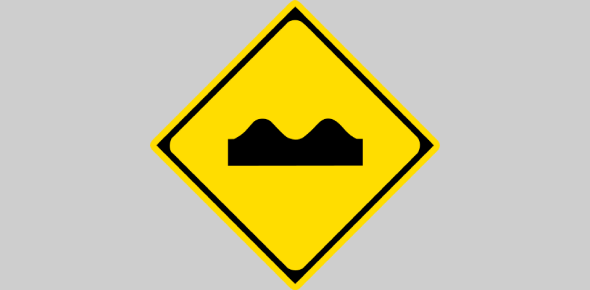


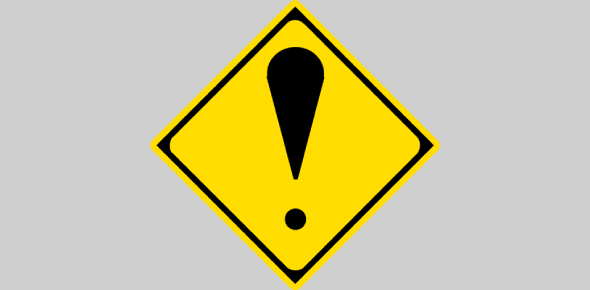
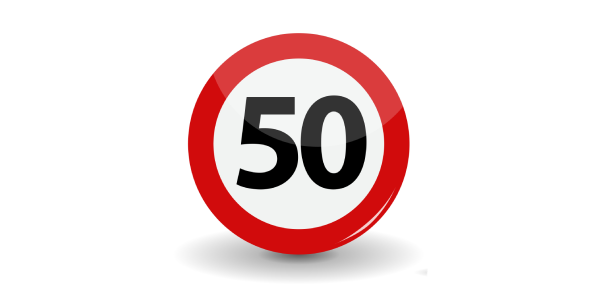

.webp)
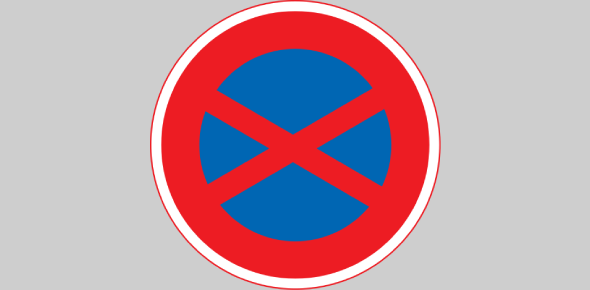
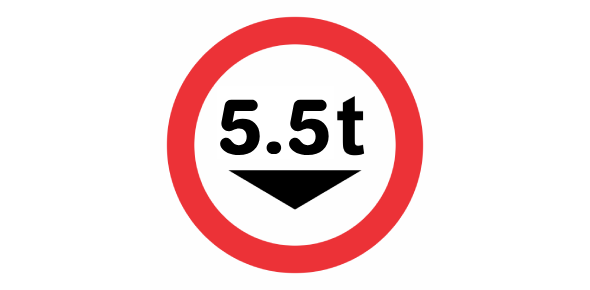
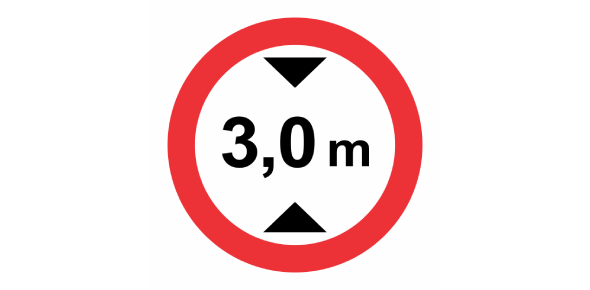
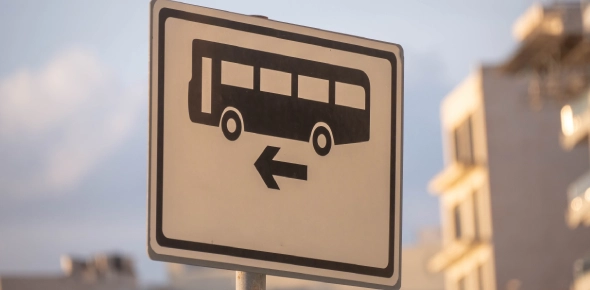

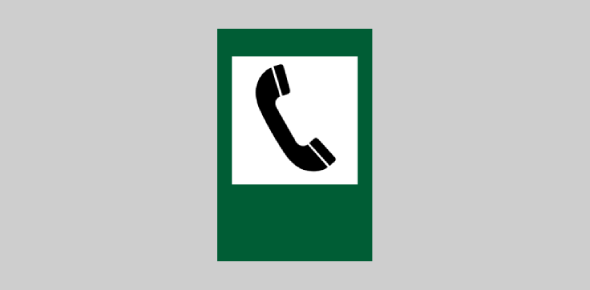

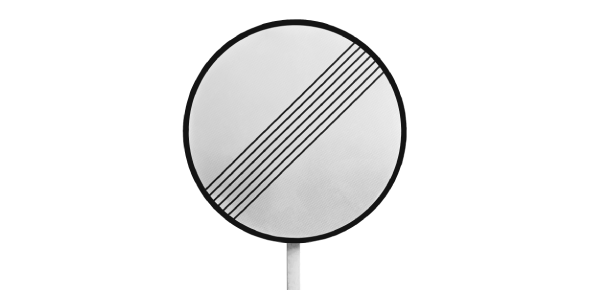
.webp)
